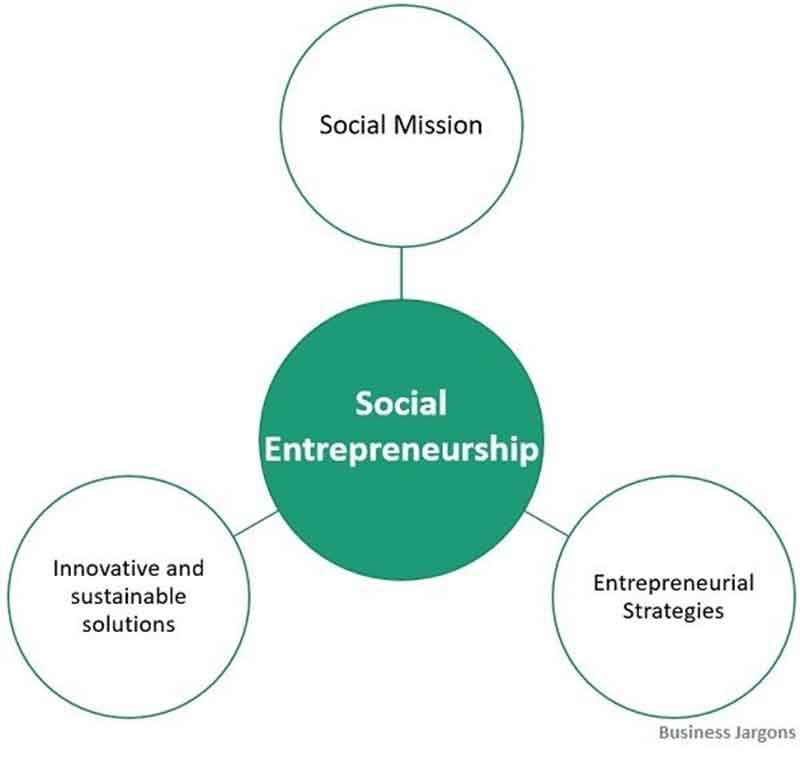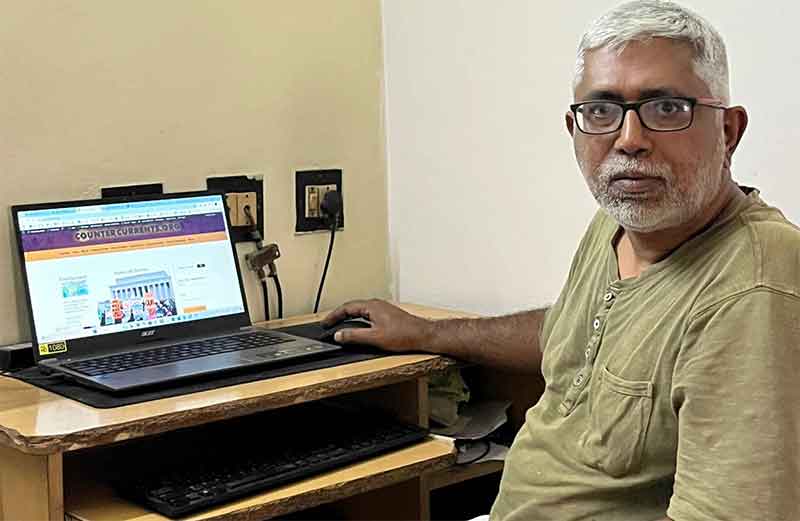
Design Thinking could be variedly conceived as a methodology, strategy, idea or a worldview, that is essentially customer-centric in its scope and applications. On a granular level, it is borrowing the “eyes of a designer”, to “see the end user”, while developing products and services, tools and equipments and designing systems and processes. Design Thinking is iterative and non-linear in its development cycle, where feedback loops involving target users interactions and engagements are guaged using prototypes, that facilitates fine-tuning and refinement of the product, service or process, prior to commercialization.
In cut-throat businessworld, such adaptive design and development cycles, not only enhance product/service market fit and faster adoption by the target segment, but also significantly improves business agility to churn out products, services and cyber-physical systems at a faster pace, commensurate with short technology obsolescence, evolving customers needs and market dynamics. The scope of design thinking is not confined to industry and businesses, but could extend its utility as an effective tool, both in not-for-profit and social enterprise/ impact sectors that employ business solutions to solve social problems. Creative problem solving is the defining paradigm, that should potentially engender a vibrant social innovation ecosystem.
In a well documented case, that first appeared in Stanford Social Innovation Review, cites a compelling testimony, pertinent to the consequences of flaws in overall design, that impedes desired consumer behavior. In the case study, a local bore well with unsafe water is juxtaposed with a community water treatment plant, run by Naandi Foundation in the outskirts of Hyderabad, India. The protagonist of the story, is a young woman who fetches water from a bore hole that is located 300 feet from her house. She uses a 3 gallon can and routinely carry it, effortlessly on her head. Despite the inherent advantages of using the potable water from the treatment plant, and her family falling sick periodically from using water from bore well, she abandons the safe water. Ingrained habit was never the reason, or was the small fee of Rs.10 (20 cents) charged for 5 gallons by the treatment plant. The overriding cause was in the design. The plant – located half a kilometer from her home-only provided 5 gallon cans with no options for smaller sizes. When fully filled, the 5-gallon plastic jerrican shaped in form of a rectangular container was too heavy to lift. Moreover, it was mandatory to purchase a punchcard for 5 gallons a day, which would cause wastage and redunduncy of use. Her daily household consumption was much lower.
While designing the value chain activities, the foundation overlooked the critical cultural aspect of logistics of households with only women fetching water on foot and carried either on their head or hip, when their husbands and fathers were off on work during the day. Though pricing in the marketing-mix at 20 cents/5 gallon was appropriate (actually paying this small sum for water was perceived as status symbol), the promoters fell short in customer segmentation and optimal physical design characteristics of the product. By designing 5 gallon only cans, they missed a prospective segment of women householders without access to two-wheelers or cars to transport the cans. Applying design thinking principles could have resolved the issue with a better understanding of the needs of the customer, through prototyping and generating feedback.
Design Thinking hinges on three interdependent variables, firstly, the desirability of the product or service, secondly, the technical feasibility of the solution and lastly its economic viability. Practitioners have added sustainability as another variable, in consonance with a global campaign for the promotion and use of ecologically and environmentally sustainable products, which could be construed as a subset of desirability. Since Design Thinking is dynamic, agile and iterative and thereby non-linear, it accomodates wild ideas, their tinkering and testing and holds immense possibility of turning ambiguity into opportunity. Design Thinking passes through different sequential phases, from the initial discovery phase to define, develop and delivery of the solution. The dicovery and define phases constitute the problem space, whereas the develop and delivery phases are the solution space. When a problem moves from the discovery phase, it allows for brainstorming of a wide variety of ideas and solutions in the define phase, covering the broad spectrum of creativity and pragmatism. Divergent thinking is the norm for creating choices before convergent thinking of making choices. American scientist and two-time Nobel Laureate Linus Pauling, averred, “To get a good idea, you need a lot of ideas.”
Since design thinking permits unconstrained imagination for creative problem solving, solutions could be derived from avant-garde out-of-the-box thinking as much as inside-the-box thinking. Jerry Sternin, former Tufts University professor and founder of Positive Deviance Collaborative, demonstrates, through one of his social campaigns in Vietnam, fighting malnutrition among its children in about 10,000 villages. In 1990, Sternin and his wife Monique, were invited by the Vietnamese government to develop social models to mitigate the alarmingly high 65% malnutrition in children, under the age of five. The children though were administered health supplements by UN agencies and the government, the results were dismal and unsatisfactory. Sternin and his wife, with their expertise and precedence in developing solutions based on design thinking methodology, took an interesting inside-the-box approach. Rather than formulating novel and external- interventional solutions set, they simply looked for healthy children within the sample population of very poor families, their dietary regimen, cooking methods and available food that delienated them from malnourished counterparts.
They discovered that, those children – surveyed among 4 Quong Xuong communities in the province of Than Hoa– who beat malnutrition had in their diet, small shrimps, crabs and snails collected from the paddy fields, supplemented with greens from sweet potatoes. Sternin coined a new term for these distinctive differentiator groups, calling it “Positive Deviants.” Though such food were readily available, the prevalent taboo against these, categorized as ‘unsafe food’ for children, deterred almost all households from their dietary use. Identifying these “Positive Deviants”, motivated the team to enrol 1000 children in a controlled environment, conducting cooking classes and workshops, enlightening the need of making these minor adjustments to the dietary composition. Within a year, 80% of the enrolled children were fully nourished. Encouraged by the stupendous results, the government successfully replicated this program to 14 other villages across the country.
To better empathize with customer needs, design thinking framework exhorts a journalistic phrase, “Go To The Genba” – literally translated as “The Real Place” – a euphemism to get first-hand information from the scene of crime. In 2007, Danish innovation and design agency, Hatch & Bloom was hired by the municipality of Holstebro to design a new meal plan for its senior citizens, after an earlier report of growing malnutrition among them. Around 125,000 senior Danes in assisted living facilities and residential care units had enlisted that year to receive government sponsored meal-plans. But nutritional challenges were intensifying, for the singular reason that, per capita consumption was diminishing and 20% were reported malnourished. For Holstebro officials and the management of Hospitable Food Service, the organization contracted for meal preparation and delivery, the solution was unexacting; a simple tweaking of the menu to enhance nutritional content. But for the Hatch & Bloom team, the problems run deeper.
Hatch & Bloom embarked on a two-pronged strategy in consonance with design thinking principles to suspend judgement until a 360° view of the issue was available. They interviewed all stakeholders involved – both the senior citizens and the cooks who prepared the meals in community kitchens – and the collated data was revelatory. Their ethnographic research suggested that senior citizens were disillusioned with monotony of the menu, which, was repeated for 90 days consecutively. Though, this would facilitate bulk buying discounts and reduce logistical costs, choosing from the same menu for three months was a major deterrent to relish the food on the table. The quantity of food consumed had positive correlations with ones mental disposition and thus food-intake fell drastically. From the perspective of the cooks, it was their self-esteem needs that was at stake. These employees who worked in public kitchens were relegated inferior to restaurant chefs, with almost no scope for creativity, despite the Hatch & Bloom findings that their culinary prowess were at par with mainstream chefs. Abraham Maslow’s Hierarchy of Needs Theory, propounds the inevitability of fulfilling self-esteem needs for individual and employee satisfaction in their personal lives and chosen vocations.
By accurately mapping the problem space, Hatch & Bloom was able to redefine the solutions set. They have redesigned the meal plan service with the introduction of seasonal fruits, varied and customizable menu options with detailed descriptions of its preparation had resounding positive impact on the seniors. They also hired a celebrity professional chef to observe and retrain the public kitchen cooks if deemed necessary. From the sequential discovery and define phases of the creative problem solving, Hatch & Bloom moved to creating prototypes that were tested and iterated further, until it was ready for rollout. The meal packaging was redesigned, with leeway for modular meals and the cooks were accorded the liberty to choose and innovate on the menu. They were given uniforms – from the nightgown-like apron they used to wear – that included the hallmark chef hats (toque), to induce a sense of belonging and rekindle their pride and passion for cooking. Aesthetics combined with autonomy and functionality elevated their morale, and the renewed enthusiasm was palpable. The service was rebranded as Good Kitchen, which had positive brand associations, identity and recall among its patrons. Hatch & Bloom had manifestly implemented design thinking principles of both divergent and convergent thinking and the power of co-creation to address an issue that resided more subliminally than peripheral.
Personas and Empathy Maps are tools commonly used by design thinking teams to fictitiously analyse user engagements and customer identification in indirect customer markets, especially when developing B2C solutions. In conventional product or service development, a Features and Benefits Matrix (FAB) is used to create prototypes and its attendant iterations before production. But, in Design Thinking method, benefits take precedence over the product, akin to identifying pain points first and then applying a technology solution. The FAB order is switched to BAF (Benefits and Features) matrix. In social innovation projects, garnering an intimate understanding of the customer segments and their unmet needs are critical in developing an compelling value proposition and business model.
Mobisol, now part of Engie, a Berlin based company that had pioneered off-grid solar energy solutions in sub-saharan Africa, offers a brilliant case study of applying Design Thinking framework to social enterprises. Globally, an estimated 1.5 billion people are off-the-grid and use polluting hydrocarbon based, natural fuel sources like burning wood, kerosene and diesel generators for their domestic household energy needs. Mobisol, embarked on an ambitious journey of empowerment, by installing PV Solar Panels in homes across sub-Saharan Africa, starting in Tanzania. The primary research conducted, focused on data gathering, largely by observation and interaction with the target segement – individual households – and collecting comprehensive data points on their needs, aspirations and desired benefits in installing solar panels on rooftops. Several interesting patterns emerged from the research.
The strategy team discovered, that the utility of solar panels were not just limited to lighting, but had multiple user requirements, from charging mobile phones, to watching TV and listening to radio channels. The aspirational goal was ownership rather than renting. Mobile penetration was high and affordability buoyant, if the monthly rentals were maintained at around 15 Euros. Mobisol, by capitalizing on invaluable multiple data points, devised a rent-to-own buisness model by charging a monthly rent of 15 Euros for a three year period, when the capital expenses at 500 Euros are fully paid off by the subscribers and ownership formalized. The monthly installments can be paid via mobile apps of Airtel Money or M-PESA. Competitors thought that rent-to-own business model was non-feasible and will be a fiasco, but on its success, they have followed suit. Ironically, business consultants recommended a rental only model! The PV solar panels can be integrated by ICT technology and therefore powered by a web based interface, accessed through mobile phones. The system can be remotely turned-off which incentivizes timely EMI payments.
Design Thinking principles further uncovered lacunae in last mile distribution, where in the absence of roads and other base infrastructure, their targeted goal of serving rural heartlands and increasing per capita consumption to achieve scale economies could be greatly diminished. Mobisol circumvented this issue by selling the panels to informal market places and the product will be transported by the subscribers themselves and the plug-and-play system self- installed, by following an operating manual. They also put in place a maintenance ecosystem, which was a gnawing problem post-installation, by handpicking individuals and providing them with entrepreneuership and technical training services, thus creating an avenue for self-employment. Since 2019, Mobisol has been acquired by Engie, that has enabled them to expand their geographical footprint to several sub-Saharan countries. Value chain activities are deftly streamlined through design thinking, by syncretic application of renewable technology, mobile smart phones and microfinance. Mobisol has championed sustainable energy solutions and a reduction of greenhouse gas emissions, in lieu of global roadmap towards a carbon-neutral world.
Use cases of Design Thinking as a potent tool for social innovation projects abound, following its widespread adoption globally, and empirical data on its power for creative problem solving. Its initial utility was aimed at enhancing form and functionality of products, like ID Two designing the first laptop, IDEO and David Kelly Design, creating Apple Computers’ first mouse in 1892, followed by IDEO designing Oral B toothbrushes, Palm V personal digital assistants and Steelcase chairs. it has then expanded its scope from products and services to marketing mix and from reconfiguring value chains to a foundational strategy tool kit for social entrepreneurship.
Design Thinking encourages a beginners mindset, a kind of tabula rasa when approaching a problem, as India’s Aravind Eye Hospitals founder Dr. Govindappa Venkataswamy, reimagined opthalmological care to low income groups in the country, with an out-of-the-box hypothesis, “Why can’t the principles of McDonald’s be applied to eye-care?” It has since then revolutionalized eye-care for the marginal income groups in India, through a business model focusing on assembly line efficiency, productivity and cross-financing. This model is remarkably bridging the chasms between the haves and the have-nots in ophthalmological access.
Embrace Global, manufacturer of a baby warmer device replacing traditional incubators developed by Stanford University students have significantly reduced infant mortality in remote mountainous regions like Nepal, where access to electricty is rare, intermittent and prone to frequent outages. The world’s first all-in-one, wearable breast pump, branded “Willow”- that fits neatly inside a lactating mother’s brassiere – was jointly developed by Willow, IDEO and Function Engineering after experimenting and iterating with more than 60 prototypes. A mother’s breastfeeding challenges were mapped into creating a seamlessly designed product, that afforded full mobility, discretion and convenience. Design Thinking could transform an unsought need into a stellar product, through the power of prototyping and overlapping feedback loops of empathy, define, ideate, prototype and test.
In a world buffeted by pernicious storms of climate change, environmental degradation, and onslaught of rapid technological advances, it is imperative that Design Thinking discipline must transition from customer-centric to human-centric to humanity-centered design paradigms. The clarion call for a circular economy is vociferous than ever before, considering the kind of environmental legacy, we intend to bequeath to our posterity. Sustainability should be at the core of every economic and non-economic activity, prioritizing the preservation of the planet, the only place humanity can call it home. Design Thinking with empathy as one of its first principles, could not only foster social innovation at scale, but also serve as a powerful enabler of social and environmental change.
Jayakhosh Chidambaran is a management consultant and researcher.
















































